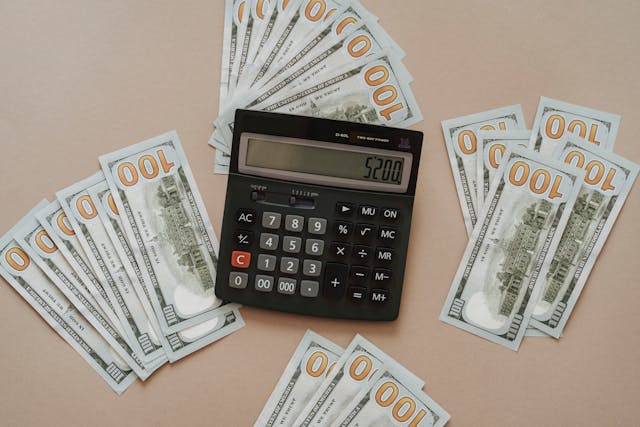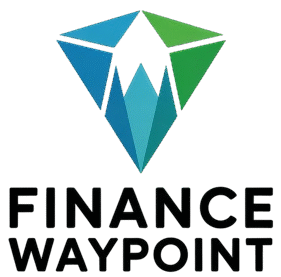In a world where financial obligations pile up quickly from daily expenses to long-term goals like retirement or buying a home taking control of your money isn’t just smart; it’s essential. Yet, for many people, the idea of budgeting feels overwhelming, restrictive, or just too complicated to stick with.
The truth is, learning how to make a personal budget is one of the most empowering things you can do for your financial well-being.
A personal budget acts like a roadmap for your money: it helps you understand your income, track your spending, and make intentional choices that align with your values and goals.
Whether you’re trying to pay off debt, save for something meaningful, or simply gain peace of mind, budgeting gives you the clarity and confidence to make it happen.
By the end of this guide, you’ll have the tools to build a budget that supports your lifestyle, adapts to change, and puts you in control of your financial future.
Key Takeaways
- Understand your income and expenses to create a solid financial foundation.
- Set clear financial goals to keep you motivated and on track.
- Choose a budgeting method that fits your lifestyle, whether it’s an app or a simple spreadsheet.
- Regularly monitor your spending to stay within your budget and adjust as needed.
- Review your budget each month to learn from your spending habits and make improvements.
Understanding Your Financial Situation

Before you can even think about budgeting, you need to know where you stand. It’s like trying to plan a road trip without knowing your starting point. You’ll just end up driving around aimlessly (and probably spending too much on gas!).
Assessing Your Income
First things first: figure out exactly how much money is coming in. This isn’t just your paycheck; it’s all your income. Do you have a side hustle? Do you get dividends from investments? Add it all up. Knowing your total income is the foundation of any good budget.
Tracking Your Expenses
This is where things can get a little scary, but it’s super important. You need to know where your money is going. All of it. For a month, track every single expense.
Use an app, a spreadsheet, or even just a notebook. Don’t skip anything, even that $3 coffee. You’d be surprised how quickly those small purchases add up.
Here’s a simple way to track:
- Use a budgeting app (Mint, YNAB, etc.)
- Keep a small notebook and pen handy.
- Review bank and credit card statements weekly.
Differentiating Between Needs and Wants
Okay, you know how much money you have coming in, and you know where it’s going.
Now it’s time to get real with yourself. What are your needs, and what are your wants? Needs are things you absolutely have to have: housing, food, transportation to work. Wants are things that are nice to have, but you could live without: that fancy coffee, the latest gadget, eating out every night.
It’s not always easy to tell the difference between a need and a want. A car might be a need if you have to drive to work, but a brand-new luxury car is definitely a want. Be honest with yourself about what you really need versus what you just want.
Setting Financial Goals
So you’ve got a handle on where your money is coming from and where it’s going.
Now for the fun part: figuring out what you actually want to do with it. This isn’t just about saving for a rainy day (though that’s important too!). It’s about setting yourself up to achieve the things that matter to you. Let’s get into it.
Identifying Short-Term Goals
Short-term goals are those things you want to achieve in the next year or two. Think about what’s realistically within reach. These goals should be specific and have a timeline. For example:
- Paying off a credit card balance.
- Saving for a down payment on a car.
- Building an emergency fund to cover 3-6 months of living expenses.
These goals are great because they’re achievable and can give you a real sense of accomplishment. Plus, tackling these smaller goals can free up more money and mental space for bigger things down the road. You can use a budget plan to help you achieve these goals.
Establishing Long-Term Goals
Now we’re talking! Long-term goals are the big ones – the things you’re aiming for several years (or even decades) down the line. These might seem daunting, but breaking them down into smaller steps makes them way less scary. Some examples:
- Saving for retirement.
- Buying a house.
- Paying for your kids’ college education.
It’s easy to get overwhelmed when thinking about long-term goals. The key is to start small and stay consistent. Even small contributions add up over time, thanks to the magic of compound interest. Don’t be afraid to adjust your goals as your circumstances change.
Creating a Savings Plan
You’ve got your goals. Now, how do you actually save for them? A savings plan is your roadmap. Here’s how to build one:
- Determine how much you need to save: For each goal, figure out the total cost and when you want to achieve it.
- Calculate your monthly savings target: Divide the total cost by the number of months you have to save.
- Automate your savings: Set up automatic transfers from your checking account to your savings or investment accounts. This way, you’re paying yourself first, before you even have a chance to spend the money. Consider using a budgeting app to help you with this.
Having a solid savings plan is essential for reaching your financial goals. It’s not always easy, but with a little planning and discipline, you can make it happen.
Creating Your Personal Budget

Alright, so you’ve figured out where your money is coming from and where it’s going. Now comes the fun part – actually making a budget! It might seem daunting, but trust me, it’s like finally getting the instruction manual for your own life. It’s about taking control and making sure your money is working for you, not the other way around. Let’s break it down.
Choosing a Budgeting Method
There are tons of ways to budget, and honestly, the best method is the one you’ll actually stick with. Some people love the nitty-gritty details of tracking every penny, while others prefer a more hands-off approach.
Here are a few popular options:
- The 50/30/20 Rule: This is a simple way to allocate your after-tax income. 50% goes to needs, 30% to wants, and 20% to savings and debt repayment. It’s a great starting point if you’re new to budgeting.
- Zero-Based Budgeting: This method requires you to allocate every single dollar you earn to a specific category, so your income minus your expenses equals zero. It’s more time-consuming but can be really effective for seeing where your money is going. You can practice budget management with this method.
- Envelope Budgeting: This is a cash-based system where you allocate cash to different envelopes for different spending categories. Once the envelope is empty, you can’t spend any more in that category. It’s great for controlling impulse spending.
I personally like using a budgeting app because it automates a lot of the tracking. But I know people who swear by spreadsheets or even just a simple notebook. The key is to find something that fits your personality and lifestyle.
Allocating Funds for Essentials
This is where you figure out how much you need to spend on the things you absolutely can’t live without. Think of it as the foundation of your budget. Here are some common essential expenses:
- Housing (rent or mortgage)
- Utilities (electricity, water, gas)
- Transportation (car payment, gas, public transport)
- Food (groceries)
- Healthcare (insurance premiums, doctor visits)
Be realistic about these numbers. Don’t underestimate how much you spend on groceries or gas. Look back at your spending from the past few months to get a clear picture. Once you have these numbers, you can start to see how much you have left for everything else.
Incorporating Savings and Investments
Saving and investing are crucial for your long-term financial health. Don’t think of them as optional extras; they should be a non-negotiable part of your budget.
Even if you can only save a small amount each month, it’s better than nothing. Think about your financial goals – are you saving for a down payment on a house, retirement, or just a rainy day fund? Here’s how to work it in:
- Set a savings goal: Decide how much you want to save each month. Even small amounts add up over time.
- Automate your savings: Set up automatic transfers from your checking account to your savings or investment account. This way, you don’t even have to think about it.
- Consider your investment options: Talk to a financial advisor about the best investment options for your goals and risk tolerance. You can learn more about investment portfolio strategies online.
Creating a budget is a big step toward taking control of your finances. It’s not always easy, but it’s definitely worth it. Remember to be patient with yourself and don’t be afraid to adjust your budget as needed. You’ve got this!
Monitoring Your Budget
Tracking Your Spending
Okay, so you’ve made a budget. Awesome! But that’s only half the battle. Now comes the part where you actually see if it’s working.
Tracking your spending is super important. Think of it like this: you wouldn’t drive a car without looking at the speedometer, right? Same deal here. You need to know where your money is going, every single dollar.
- Use a budgeting app (we’ll talk about those later).
- Keep a notebook and jot down every expense.
- Review bank and credit card statements regularly.
It’s easy to think you know where your money goes, but you’d be surprised. Little things add up. That daily coffee, those impulse buys online… they can really throw you off track if you’re not paying attention.
Adjusting Your Budget as Needed
Life happens, right? Your budget isn’t set in stone. Maybe your car needs a repair, or you get a raise at work. Things change! That’s why you need to be ready to tweak your budget.
If you’re constantly going over in one category, it’s time to re-evaluate. Can you cut back somewhere else? Do you need to adjust your goals? Be flexible and don’t be afraid to make changes.
It’s all about finding what works for you.
Staying Disciplined with Your Spending
This is the tough one. It’s easy to get excited about a new budget and then lose steam after a few weeks. Staying disciplined is key.
Think of your budget as a tool to help you reach your goals. It’s not a punishment! Find ways to stay motivated. Maybe reward yourself (within reason!) when you hit a savings goal or find a friend to be your budgeting buddy and keep each other accountable.
It’s a marathon, not a sprint. Keep at it, and you’ll get there.
Using Budgeting Tools and Apps
Budgeting doesn’t have to feel like a chore. With the right tools, it can become a streamlined part of your routine. There are so many options available, from sophisticated apps to simple spreadsheets, and even old-school pen-and-paper methods. The key is finding what clicks with you and your lifestyle.
Choosing the Right Budgeting App
Budgeting apps can be game-changers, but with so many out there, it’s easy to get overwhelmed. Think about what you need. Are you looking for something that automatically tracks your spending? Do you want help with setting financial goals? Or maybe you just need a simple way to categorize your expenses?
Some popular apps include:
- YNAB (You Need a Budget): Great for zero-based budgeting, where every dollar has a purpose.
- Goodbudget: Uses the envelope budgeting system digitally.
- EveryDollar: A straightforward app that helps you plan your spending.
- Empower Personal Dashboard: Offers a range of features, including budgeting and investment tracking.
Consider trying a few free trials to see which app fits best. Don’t be afraid to switch if one isn’t working for you.
Utilizing Spreadsheets for Budgeting
If you’re comfortable with numbers, spreadsheets can be a powerful and customizable budgeting tool. You can create your own from scratch or download a free template online. Spreadsheets offer flexibility – you can tailor them to your specific needs and track whatever metrics are important to you.
Here’s a basic structure you can use:
| Category | Expected Amount | Actual Amount | Difference |
|---|---|---|---|
| Income | |||
| Rent/Mortgage | |||
| Utilities | |||
| Groceries | |||
| Transportation | |||
| Debt Payments | |||
| Savings/Investment | |||
| Miscellaneous | |||
| Total |
Spreadsheets might seem intimidating at first, but there are tons of tutorials online. Once you get the hang of it, you’ll have a budgeting system that’s perfectly tailored to you. Plus, it’s a great way to improve your Excel skills!
Exploring Traditional Budgeting Methods
Don’t underestimate the power of old-school methods! Sometimes, going back to basics can be surprisingly effective. Consider these options:
- The Envelope System: Allocate cash to different spending categories (like groceries, entertainment, etc.) and put it in labeled envelopes. Once the envelope is empty, you can’t spend any more in that category. This is a great way to control impulse spending.
- The 50/30/20 Rule: Allocate 50% of your income to needs, 30% to wants, and 20% to savings and debt repayment. This is a simple framework that can help you prioritize your spending.
- Pen and Paper: Simply writing down your income and expenses in a notebook can be a great way to stay aware of where your money is going. It’s also a good option if you’re trying to reduce your screen time.
Ultimately, the best budgeting method is the one you’ll actually stick with. Experiment with different tools and techniques until you find what works for you. There’s no one-size-fits-all solution, so don’t be afraid to get creative!
Reviewing and Adjusting Your Budget
Conducting Monthly Reviews
Okay, so you’ve made a budget. Awesome! But it’s not a “set it and forget it” kind of deal. Life happens, things change, and your budget needs to keep up.
That’s why monthly reviews are super important. Set aside some time, maybe an hour or two, at the end of each month to really look at how things went. Did you stick to your spending plan? Where did you nail it, and where did you totally miss the mark?
This is where you get to be a financial detective and figure out what’s working and what’s not.
Making Necessary Adjustments
So, you’ve reviewed your budget and found some areas that need work. Now what? This is where you make adjustments.
Maybe you’re consistently overspending on eating out. Time to cut back or find cheaper alternatives. Or maybe you’re crushing your savings goals – congrats! Consider upping your contributions or putting that extra cash towards another goal, like paying down debt.
The key is to be flexible and willing to tweak your budget as needed. Don’t be afraid to experiment and find what works best for you.
Learning from Your Budgeting Experience

Budgeting isn’t just about numbers, it’s about learning about yourself and your spending habits. Each month is a chance to gain insights and improve your financial skills.
Did you impulse buy something you later regretted? Figure out what triggered that impulse and how to avoid it next time. Did you find a way to save money without sacrificing your happiness? Share that tip with others!
The more you learn from your budgeting experience, the better you’ll become at managing your money and achieving your financial goals.
Think of your budget as a living document. It’s not set in stone, and it’s okay to make changes along the way. The important thing is to stay engaged, keep learning, and keep striving towards your financial goals.
Wrapping It Up
So there you have it! Learning how to make a personal budget doesn’t have to be a scary task. It’s all about knowing where your money goes and making sure it works for you.
By following these steps, you can take charge of your finances and start reaching those goals you’ve set.
Remember, it’s okay to tweak your budget as life changes. Just keep an eye on your spending and adjust when needed. With a little discipline and some patience, you’ll be on your way to financial peace of mind.
Now go ahead and give it a shot you might be surprised at how much better you feel!
Frequently Asked Questions
What is a personal budget?
A personal budget is a plan that helps you manage your money. It shows how much money you earn and how much you spend, helping you keep track of your finances.
Why should I create a budget?
Creating a budget can help you save money, pay off debt, and reduce stress about your finances. It allows you to see where your money goes and helps you make better spending choices.
How do I start a budget?
To start a budget, first list your income and then list your expenses. Subtract your expenses from your income to see how much money you have left. Then, plan how you want to spend or save that money.
What are needs and wants?
Needs are things you must have to live, like food and housing. Wants are things you would like to have but don’t need, like new clothes or eating out.
How often should I review my budget?
You should review your budget regularly, at least once a month. This way, you can see if you are sticking to your plan and make changes if needed.
Are there tools to help with budgeting?
Yes! There are many budgeting apps and tools available, like spreadsheets or even just pen and paper. Choose one that works best for you to help keep track of your money.




